Themed collection Physical Chemistry

Nanothermodynamics of metal nanoparticles
This article presents a perspective on thermodynamic characterization of metal nanoparticles by computational chemistry. Topics emphasized include structural stability, phases, phase changes, and free energy functions of aluminum nanoparticles.
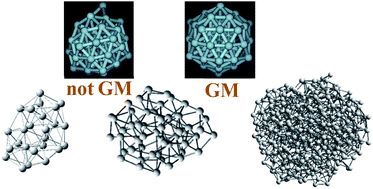
Chem. Sci., 2014,5, 2605-2624
https://doi.org/10.1039/C4SC00052H
Selective photocatalytic reactions with organic photocatalysts
This perspective presents various photocatalytic reactions with organic photocatalysts such as acridinium and quinolinium ion derivatives, which upon photoexcitation enable efficient oxygenation, halogenation and C–C bond formation reactions.
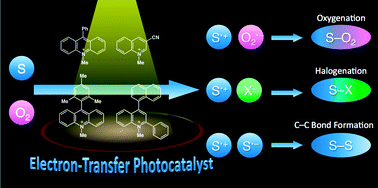
Chem. Sci., 2013,4, 561-574
https://doi.org/10.1039/C2SC21449K
Rethinking the term “pi-stacking”
A review of experimental and theoretical literature across several fields reinforces the conclusion that the terms “pi-stacking” and “pi–pi interactions” do not accurately describe the forces that drive association between aromatic molecules of the types most commonly studied in chemistry or biology laboratories.

Chem. Sci., 2012,3, 2191-2201
https://doi.org/10.1039/C2SC20045G
Energy transfer at metal surfaces: the need to go beyond the electronic friction picture
Recent experiments suggest that for certain molecule–surface systems, energy can be transferred between multiple quanta of molecular vibration and a single electron.

Chem. Sci., 2011,2, 1647-1655
https://doi.org/10.1039/C1SC00181G
Monolayers of trimesic and isophthalic acid on Cu and Ag: the influence of coordination strength on adsorption geometry
The adsorption geometry changes from monopodal on Ag to bipodal on Cu.
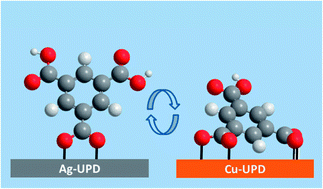
Chem. Sci., 2013,4, 4455-4464
https://doi.org/10.1039/C3SC52137K
Photophysical and theoretical investigations of the [8]cycloparaphenylene radical cation and its charge-resonance dimer
Oxidation of [8]cycloparaphenylene afforded a highly delocalized radical cation capable of forming an unusually strong charge-resonance dimer.
![Graphical abstract: Photophysical and theoretical investigations of the [8]cycloparaphenylene radical cation and its charge-resonance dimer](/en/Image/Get?imageInfo.ImageType=GA&imageInfo.ImageIdentifier.ManuscriptID=C3SC51861B&imageInfo.ImageIdentifier.Year=2013)
Chem. Sci., 2013,4, 4285-4291
https://doi.org/10.1039/C3SC51861B
Rotationally inelastic scattering of CD3 and CH3 with He: comparison of velocity map-imaging data with quantum scattering calculations
Quantum-mechanical scattering calculations are tested against velocity map imaging measurements for inelastic collisions of a polyatomic radical.

Chem. Sci., 2013,4, 4199-4211
https://doi.org/10.1039/C3SC52002A
Thermodynamic and kinetic specificities of ligand binding
The equivalence of conventional and intrinsic specificities of protein–ligand binding if the N- and C-terminus of multiple protein receptors are linked together with one another.
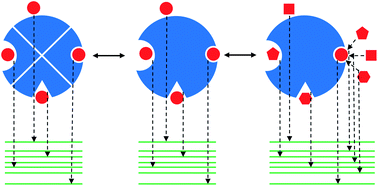
Chem. Sci., 2013,4, 2387-2395
https://doi.org/10.1039/C3SC50478F
Binding energies of micro-hydrated carbohydrates : measurements and interpretation
Experimental and computational methods have been employed to probe the strength of the interaction between monosaccharides and a single water molecule in the gas phase.
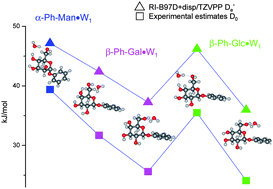
Chem. Sci., 2013,4, 1830-1836
https://doi.org/10.1039/C3SC50135C
Aromatic reactivity revealed: beyond resonance theory and frontier orbitals
Ionisation energy surfaces consistently reveal the most reactive sites in aromatic molecules even where established reactivity models fail.
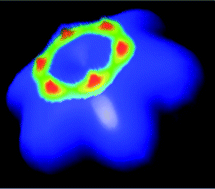
Chem. Sci., 2013,4, 1772-1780
https://doi.org/10.1039/C3SC50309G
A surface site interaction model for the properties of liquids at equilibrium
Solvation properties are described by summing over pairwise interactions between discrete contact points on the surfaces of solvent and solute.

Chem. Sci., 2013,4, 1687-1700
https://doi.org/10.1039/C3SC22124E
Harnessing thermal fluctuations for purposeful activities: the manipulation of single micro-swimmers by adaptive photon nudging
A gold-plated Janus micro-swimmer is shepherded towards the target by adaptively turning on and off the photophoretic heating laser in real time while making use of rotational random walk for aligning the swimmer.
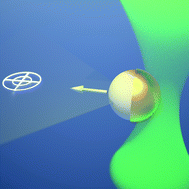
Chem. Sci., 2013,4, 1420-1429
https://doi.org/10.1039/C2SC21263C
Exploring quantum phenomena and vibrational control in σ* mediated photochemistry
Experimental and theoretical studies yield detailed insights into both tunnelling dynamics and mode-specific control through conical intersections in photoexcited thioanisole.
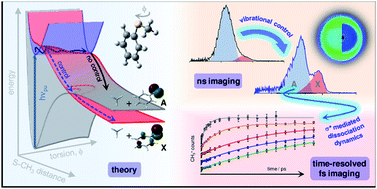
Chem. Sci., 2013,4, 993-1001
https://doi.org/10.1039/C2SC21865H
van der Waals interactions in non-polar liquids
The thermodynamic properties of non-polar liquids suggest that van der Waals interactions are a simple function of molecular surface area.

Chem. Sci., 2013,4, 834-848
https://doi.org/10.1039/C2SC21666C
Enhancement of bimolecular reactivity by a pre-reaction van der Waals complex: the case of F + H2O → HF + HO
A pre-reaction van der Waals well enhances reaction of the F + H2O → HF + OH reaction via stereodynamics.
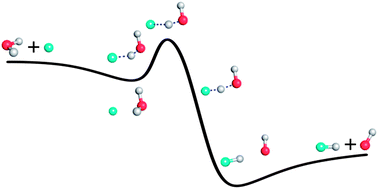
Chem. Sci., 2013,4, 629-632
https://doi.org/10.1039/C2SC21457A
On chemical bonding and electronic structure of graphene –metal contacts
A distinct difference in the strength of interfacial chemical bonding is observed for graphene overlaid with different transition metals.
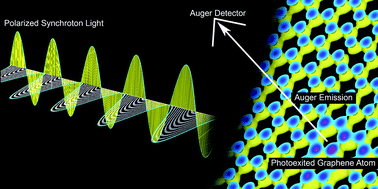
Chem. Sci., 2013,4, 494-502
https://doi.org/10.1039/C2SC21018E
A theoretical analysis of chemical bonding, vibronic coupling, and magnetic anisotropy in linear iron(II) complexes with single-molecule magnet behavior
Detailed ab initio and DFT analyses of vibronic coupling and magnetic anisotropy of a series of two-coordinate iron(II) complexes are reported.
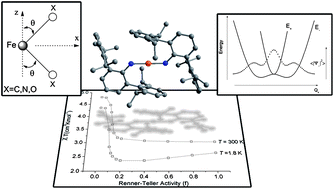
Chem. Sci., 2013,4, 139-156
https://doi.org/10.1039/C2SC21394J
Vibrationally mediated bond selective dissociative chemisorption of HOD on Cu(111)
A six-dimensional quantum dynamics study of dissociative chemisorption of HOD on a rigid Cu(111) surface found strong bond selectivity.
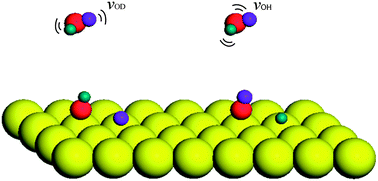
Chem. Sci., 2013,4, 503-508
https://doi.org/10.1039/C2SC21393A
Vibrationally resolved dynamics of the reaction of Cl atoms with 2,3-dimethylbut-2-ene in chlorinated solvents
The reaction of Cl atoms with 2,3-dimethylbut-2-ene in solution in CDCl3 or CCl4 produces vibrationally hot HCl.
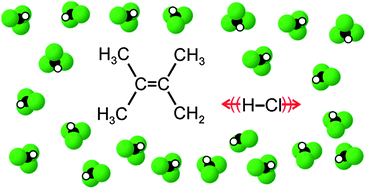
Chem. Sci., 2013,4, 226-237
https://doi.org/10.1039/C2SC21267F
A new, centered 32-electron system: the predicted [U@Si20]6−-like isoelectronic series
The next step after 8 and 18 electrons, a 32-electron magic number, is discovered in the title isoelectronic series.
![Graphical abstract: A new, centered 32-electron system: the predicted [U@Si20]6−-like isoelectronic series](/en/Image/Get?imageInfo.ImageType=GA&imageInfo.ImageIdentifier.ManuscriptID=C2SC20448G&imageInfo.ImageIdentifier.Year=2012)
Chem. Sci., 2012,3, 2843-2848
https://doi.org/10.1039/C2SC20448G
Experimental and quantum chemical characterization of the water oxidation cycle catalysed by [RuII(damp)(bpy)(H2O)]2+
A Ru-aqua water oxidation catalyst undergoing a WNA mechanism has been thoroughly investigated by experimental and quantum mechanical methodologies.
![Graphical abstract: Experimental and quantum chemical characterization of the water oxidation cycle catalysed by [RuII(damp)(bpy)(H2O)]2+](/en/Image/Get?imageInfo.ImageType=GA&imageInfo.ImageIdentifier.ManuscriptID=C2SC20399E&imageInfo.ImageIdentifier.Year=2012)
Chem. Sci., 2012,3, 2576-2586
https://doi.org/10.1039/C2SC20399E
A computational study of the origin of stereoinduction in NHC-catalyzed annulation reactions of α,β-unsaturated acyl azoliums
The origin of stereoselectivity of NHC-catalyzed annulation reactions of ynals and stable enols was studied with Density Functional Theory and the data suggest that the C–C bond formation is the stereo-determining step.
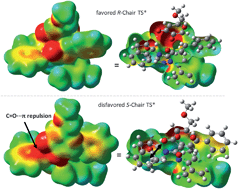
Chem. Sci., 2012,3, 2346-2350
https://doi.org/10.1039/C2SC20331F
Thermodynamic analysis of Xe/Kr selectivity in over 137 000 hypothetical metal–organic frameworks
Screening over 137 000 hypothetical metal–organic frameworks reveals the most promising pore morphologies for Xe/Kr separation.
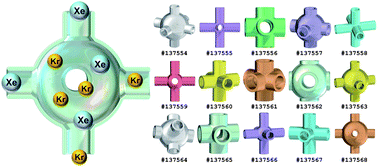
Chem. Sci., 2012,3, 2217-2223
https://doi.org/10.1039/C2SC01097F
Theoretical study of Pd(0)-catalyzed carbohalogenation of alkenes : mechanism and origins of reactivities and selectivities in alkyl halide reductive elimination from Pd(II) species
The mechanism of Pd(0)-catalyzed carbohalogenation of alkenes has been investigated with density functional theory.
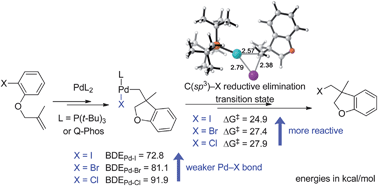
Chem. Sci., 2012,3, 1987-1995
https://doi.org/10.1039/C2SC20103H
Joint electrical, photophysical and computational studies on D-π-A dye sensitized solar cells: the impacts of dithiophene rigidification
We scrutinize the influences of π-linker rigidification upon the optoelectronic features of dye-sensitized solar cells using a cobalt(II/III) redox electrolyte.
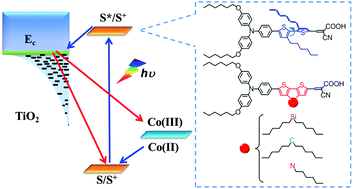
Chem. Sci., 2012,3, 976-983
https://doi.org/10.1039/C2SC00973K
A TD-DFT study of the effects of structural variations on the photochemistry of polyene dyes
Relative probability densities of dye–titania complexes: (a) NKX-2553/TiO2 and (b) NKX-2554/TiO2 show direct charge transfer while NKX-2569/TiO2 shows (c1) indirect as well as (c2) direct charge transfer mechanisms.
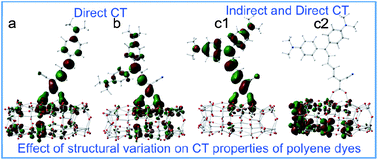
Chem. Sci., 2012,3, 416-424
https://doi.org/10.1039/C1SC00676B
Water-hydroxyl phases on an open metal surface: breaking the ice rules
Hydroxyl forms a series of unusual 1D and 2D water/hydroxyl structures on Cu(110), adopting different metal sites to create incomplete hydrogen bonding networks that violate the Bernal–Fowler–Pauling ‘ice rules’.
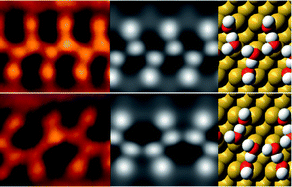
Chem. Sci., 2012,3, 93-102
https://doi.org/10.1039/C1SC00355K
Photo-induced charge recombination kinetics in low bandgap PCPDTBT polymer :CdSe quantum dot bulk heterojunction solar cells
The interfacial charge transfer recombination processes under working conditions that limit the device performance in polymer:CdSe quantum dot bulk heterojunction hybrid solar cells have been measured.
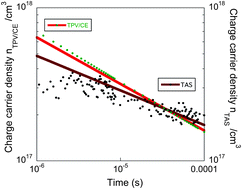
Chem. Sci., 2011,2, 2396-2401
https://doi.org/10.1039/C1SC00514F
Multi-structural variational transition state theory. Kinetics of the 1,4-hydrogen shift isomerization of the pentyl radical with torsional anharmonicity
A new formulation of variational transition state theory for reactions of complex molecules with multiple reactants and transition state conformational structures.
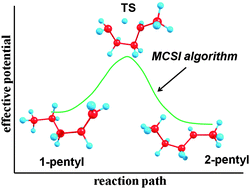
Chem. Sci., 2011,2, 2199-2213
https://doi.org/10.1039/C1SC00225B
Practical computation of electronic excitation in solution: vertical excitation model
A self-consistent state-specific nonequilibrium two-response-time vertical excitation model (VEM) for electronic excitation in solution is presented as a unified treatment of solvatochromic shifts in liquid-phase absorption spectra.
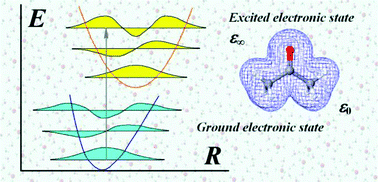
Chem. Sci., 2011,2, 2143-2161
https://doi.org/10.1039/C1SC00313E
Effect of defects on photocatalytic dissociation of methanol on TiO2(110)
Defects on the TiO2(110) surface could enhance the photocatalyzed methanol dissociation rate by lowering significantly the photoreaction barrier.
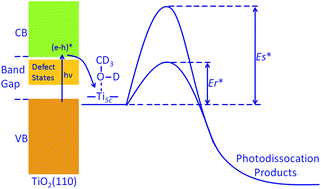
Chem. Sci., 2011,2, 1980-1983
https://doi.org/10.1039/C1SC00249J
Heavy water hydration of mannose : the anomeric effect in solvation, laid bare
The operation of the anomeric effect has been directly revealed through vibrational spectroscopy, using the solvent itself as a probe, reporting simultaneously on the effect and its role during (micro)solvation.
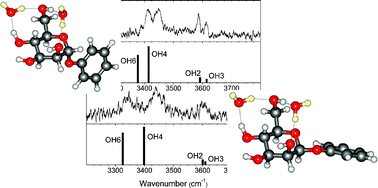
Chem. Sci., 2011,2, 1128-1134
https://doi.org/10.1039/C1SC00002K
About this collection
In honour of the 2013 Nobel Prize in Chemistry, our editors, including Haw Yang, Kopin Liu and Kazunari Domen, have selected a collection of articles in physical chemistry. The collection showcases some of the great research papers and reviews published in Chemical Science in the broad area of physical chemistry.